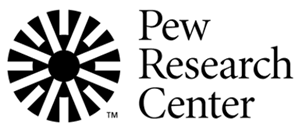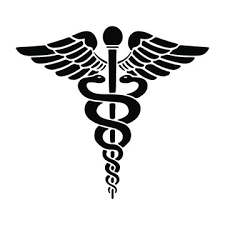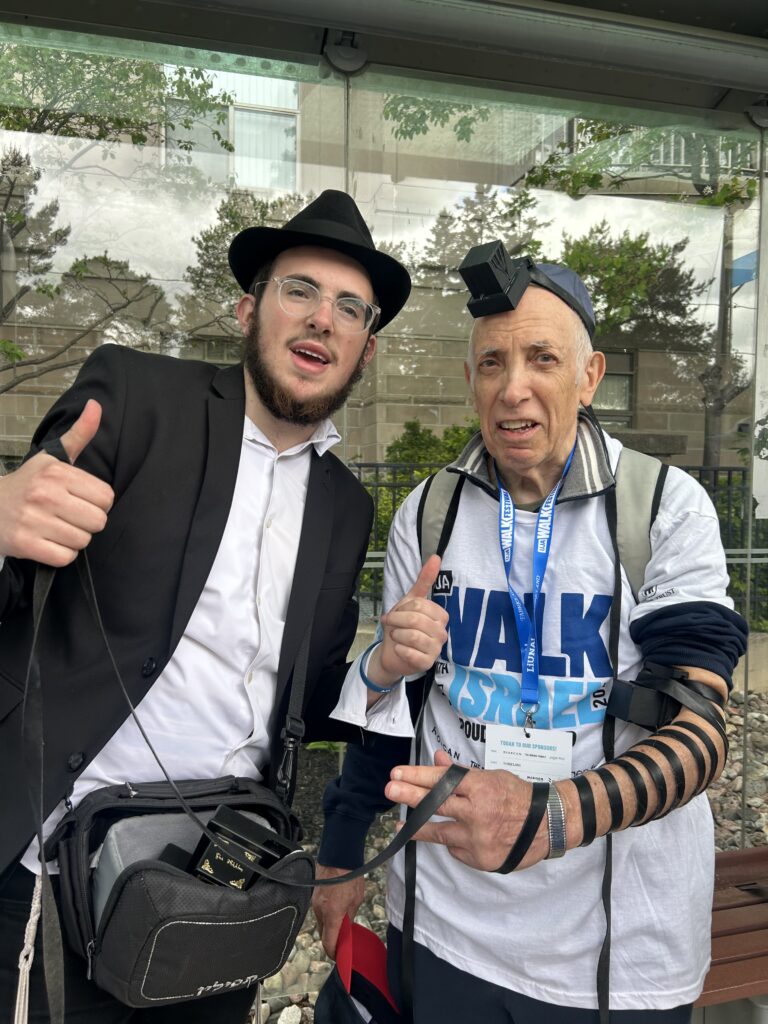Uncategorized
Israeli democracy may not survive a ‘reform’ of its Supreme Court
(JTA) — On Dec. 29, Israel swore in Benjamin Netanyahu’s sixth government. The Likud leader became Israel’s prime minister once more, and one week later, Israel’s long-anticipated judicial counterrevolution began.
In the Knesset Wednesday, newly minted Justice Minister and Netanyahu confidant Yariv Levin unveiled a package of proposed legislation that would alter the balance of power between Israel’s legislature and its Supreme Court.
At the core of this plan is a bill to allow the Knesset to override the Supreme Court. Levin’s proposals — which almost certainly have the immediate support of a Knesset majority, regardless of Levin’s assurances that they would be subject to “thorough debate” — would pave the way for Israel’s new government to pass legislation that curtails rights and undermines the rule of law, dealing a blow to Israeli democracy.
The dire implications of this proposed judicial reform are rooted in key characteristics of the Israeli political system that set it apart from other liberal democracies. Israel has no constitution to determine the balance of power between its various branches of government. In fact, there is no separation between Israel’s executive and legislative branches, given that the government automatically controls a majority in the parliament.
Instead, it has a series of basic laws enacted piecemeal over the course of the state’s history that have a quasi-constitutional status, with the initial intention that they would eventually constitute a de jure constitution.
Through the 1980s, the Knesset passed basic laws that primarily served to define state institutions, such as the country’s legislature and electoral system, capital and military. In the 1990s, there was a paradigm shift with the passage of two basic laws that for the first time concerned individuals’ rights rather than institutions, one on Human Dignity and Liberty (1992) and the other on Freedom of Occupation (1994). These laws enshrined rights to freedom of movement, personal freedom, human dignity and others to all who reside in Israel.
Aharon Barak, the president of Israel’s Supreme Court from 1995 to 2006, argued that these laws constituted a de facto bill of rights, empowering the court to review Knesset legislation and to strike down laws that violate civil liberties, a responsibility not explicitly bestowed upon the court in the basic law pertaining to the judiciary. In 1995, the Supreme Court officially ruled that it could indeed repeal legislation that violates the country’s basic laws, heralding an era of increased judicial activism in Israel in what became known as the “judicial revolution.” The court has struck down 20 laws since, a fairly modest number compared to other democracies.
The judicial revolution of the 1990s shifted the balance of power in Israel’s political system from one of parliamentary sovereignty, in which the Knesset enjoyed ultimate power, to one in which the legislature is restricted from violating the country’s (incomplete) constitution. Israel’s Supreme Court became a check on the legislative branch in a country that lacks other checks and balances and separations of power.
As a result of these characteristics, the Supreme Court currently serves as one of the only checks on the extraordinary power of Israel’s 120-member Knesset — which is why shifting that balance of power would have such a dramatic impact on Israel’s democracy.
Levin’s proposed judicial overhaul includes several elements that would weaken the power and independence of Israel’s Supreme Court. The plan includes forbidding the Supreme Court from deliberating on and striking down basic laws themselves. It would require an unspecified “special majority” of the court to strike down legislation, raising the threshold from where it currently stands.
Levin has also called for altering the composition of the selection committee that appoints top judges to give the government, rather than legal professionals, a majority on the panel. It would allow cabinet ministers to appoint legal advisors to act on their behalf, rather than that of the justice ministry, canceling these advisors’ role as safeguards against government overreach. Should a minister enact a decision that contravenes a basic law, the ministry’s legal advisor would no longer report the violation to the attorney general, and would instead merely offer non-binding legal advice to the minister.
The pièce de résistance is, of course, the override clause that would allow the Knesset to reinstate laws struck down by the Supreme Court by 61 members of Knesset, a simple majority assuming all members are present. The sole restriction on this override would be a provision preventing the Knesset from re-legislating laws struck down unanimously, by all 15 judges, within the same Knesset term.
This plan’s obvious and most immediate result would be the effective annulment of the quasi-constitutional status of Israel’s basic laws. If the Knesset’s power to legislate is no longer bound by basic laws, these de facto constitutional amendments no longer have any teeth. There are no guardrails preventing any Knesset majority from doing as it wishes, including violating basic human rights. The Knesset could pass laws openly curtailing freedom of the press or gender equality, for example, should it choose to do so.
This counterrevolution, in effect, goes further than merely undoing what occurred in the 1990s.
Most crucially, the Knesset that would once again enjoy full parliamentary sovereignty in 2022 is not the Knesset of Israel’s first four decades. Shackling the Supreme Court is essential to the agendas of the new government’s various ultra-right and ultra-religious parties. For example, the haredi Orthodox parties are eager to re-legislate a blanket exemption to the military draft for their community, which the court struck down in 2017 on the grounds that it was discriminatory. They also have their sights on revoking recognition of non-Orthodox conversions for immigrants to Israel, undoing a court decision from 2021.
The far-right, Jewish supremacist parties of Bezalel Smotrich and Itamar Ben-Gvir, meanwhile, see an opportunity to deal a decisive blow to an institution that has long served as a check on the settlement movement. They hope to tie the court’s hands in the face of oncoming legislation to retroactively legalize settlements built on private Palestinian land, which are illegal under Israeli law. But this is only the beginning: Neutering the authority of the court could pave the way for legal discrimination against Israel’s Arab minority, such as Ben-Gvir’s proposal to deport minorities who show insufficient loyalty.
The timing of Levin’s announcement Wednesday could not be more germane. The Knesset recently amended the basic law to legalize the appointment of Aryeh Deri, the Shas party leader who is serving a suspended sentence for tax fraud, as a minister in the new government. The Supreme Court convened Thursday morning to hear petitions against his appointment from those arguing that it is “unreasonable” to rehabilitate Deri given his multiple criminal convictions, a view shared by Israel’s attorney general. Levin’s proposals would bar the court from using this “reasonability” standard.
The Israeli right has long chafed at the power of the Supreme Court, which it accuses of having a left-wing bias. But a judicial overhaul like this has never enjoyed the full support of the government, nor was Netanyahu previously in favor of it. Now, with a uniformly right-wing government and Netanyahu on trial for corruption, the prime minister’s foremost interest is appeasing his political partners and securing their support for future legislation to shield him from prosecution.
In a system where the majority rules, there need to be mechanisms in place to protect the rights of minorities — political, ethnic and religious. Liberal democracy requires respect for the rule of law and human rights. Yariv Levin’s proposals to fully subordinate the Supreme Court to the Knesset will concentrate virtually unchecked power in the hands of a few individuals — government ministers and party leaders within the coalition who effectively control what the Knesset does. That those individuals were elected in free and fair elections is no guarantee that the changes they make will be democratic.
—
The post Israeli democracy may not survive a ‘reform’ of its Supreme Court appeared first on Jewish Telegraphic Agency.
Uncategorized
How the Global Religious Landscape Changed from 2010 to 2020

Muslims grew fastest; Christians lagged behind global population increase
• Christians are the world’s largest religious group, at 28.8% of the global population. They are a majority everywhere except the Asia-Pacific and Middle East-North Africa regions. Sub-Saharan Africa has surpassed Europe in having the largest number of Christians. But Christians are shrinking as a share of the global population, as millions of Christians “switch” out of religion to become religiously unaffiliated.

• Muslims are the world’s second-largest religious group (25.6% of the world’s population) and the fastest-growing major religion, largely due to Muslims’ relatively young age structure and high fertility rate. They make up the vast majority of the population in the Middle East-North Africa region. In all other regions, Muslims are a religious minority, including in the Asia-Pacific region (which is home to the greatest number of Muslims).

• The religiously unaffiliated population is the world’s third-largest religious category (24.2% of the global population), after Christians and Muslims. Between 2010 and 2020, religiously unaffiliated people grew more than any group except Muslims, despite their demographic disadvantages of an older age structure and relatively low fertility. The unaffiliated made up a majority of the population in 10 countries and territories in 2020, up from seven a decade earlier.
• Hindus are the fourth-largest religious category (14.9% of the world’s population), after Christians, Muslims and religiously unaffiliated people. Most (99%) live in the Asia-Pacific region; 95% of all Hindus live in India alone. Between 2010 and 2020, Hindus remained a stable share of the world’s population because their fertility resembles the global average, and surveys indicate that switching out of or into Hinduism is rare.
• Buddhists (4.1% of the world’s population) are the only group in this report whose number declined worldwide between 2010 and 2020. This was due both to religious disaffiliation among Buddhists in East Asia and to a relatively low birth rate among Buddhists, who tend to live in countries with older populations. Most of the world’s Buddhists (98%) reside in the Asia-Pacific region, the birthplace of Buddhism.
• Jews, the smallest religious group analyzed separately in this report (0.2% of the world’s population), lagged behind global population growth between 2010 and 2020 – despite having fertility rates on par with the global average – due to their older age structure. Most Jews live either in North America (primarily in the United States) or in the Middle East-North Africa region (almost exclusively in Israel).
These are among the key findings of a Pew Research Center analysis of more than 2,700 censuses and surveys, including census data releases that were delayed due to the coronavirus pandemic. This report is part of the Pew-Templeton Global Religious Futures project, which analyzes global religious change and its impact on societies around the world. Funding for the Global Religious Futures project comes from The Pew Charitable Trusts and the John Templeton Foundation.
Uncategorized
Antisemitism in some unlikely places in America

By HENRY SREBRNIK Antisemitism flourishes in a place where few might expect to confront it – medical schools and among doctors. It affects Jews, I think, more emotionally than Judeophobia in other fields.
Medicine has long been a Jewish profession with a history going back centuries. We all know the jokes about “my son – now also my daughter – the doctor.” Physicians take the Hippocratic Oath to heal the sick, regardless of their ethnicity or religion. When we are ill doctors often become the people who save us from debilitating illness and even death. So this is all the more shocking.
Yes, in earlier periods there were medical schools with quotas and hospitals who refused or limited the number of Jews they allowed to be affiliated with them. It’s why we built Jewish hospitals and practices. And of course, we all shudder at the history of Nazi doctors and euthanasia in Germany and in the concentration camps of Europe. But all this – so we thought – was a thing of a dark past. Yet now it has made a comeback, along with many other horrors we assume might never reappear.
Since the Hamas attack on Israel on October 7, 2023, there has been a resurgence of antisemitism, also noticeable in the world of healthcare. This is not just a Canadian issue. Two articles on the Jewish website Tablet, published Nov. 21, 2023, and May 18, 2025, spoke to this problem in American medicine as well, referencing a study by Ian Kingsbury and Jay P. Greene of Do No Harm, a health care advocacy group, based on data amassed by the organization Stop Antisemitism. They identified a wave of open Jew-hatred by medical professionals, medical schools, and professional associations, often driven by foreign-trained doctors importing the Jew-hatred of their native countries, suggesting “that a field entrusted with healing is becoming a licensed purveyor of hatred.”
Activists from Doctors Against Genocide, American Palestinian Women’s Association, and CODEPINK held a demonstration calling for an immediate cease-fire in Gaza at the Hart Senate Office Building in Washington, D.C., Nov. 16, 2023, almost as soon as the war began. A doctor in Tampa took to social media to post a Palestinian flag with the caption “about time!!!” The medical director of a cancer centre in Dearborn, Michigan, posted on social media: “What a beautiful morning. What a beautiful day.” Even in New York, a physician commented on Instagram that “Zionist settlers” got “a taste of their own medicine.” A Boston-based dentist was filmed ripping down posters of Israeli victims and a professor at the University of Pennsylvania Perelman School of Medicine did the same. Almost three-quarters of American medical associations felt the need to speak out on the war in Ukraine but almost three-quarters had nothing to say about the war in Israel.
Antisemitism in academic medical centres is fostering noxious environments which deprive Jewish healthcare professionals of their civil right to work in spaces free from discrimination and hate, according to a study by the Data & Analytics Department of StandWithUs, an international, non-partisan education organization that supports Israel and fights antisemitism.
“Academia today is increasingly cultivating an environment which is hostile to Jews, as well as members of other religious and ethnic groups,” StandWithUs director of data and analytics, and study co-author, Alexandra Fishman, said on May 5 in a press release. “Academic institutions should be upholding the integrity of scholarship, prioritizing civil discourse, rather than allowing bias or personal agendas to guide academic culture.”
The study, “Antisemitism in American Healthcare: The Role of Workplace Environment,” included survey data showing that 62.8 per cent of Jewish healthcare professionals employed by campus-based medical centres reported experiencing antisemitism, a far higher rate than those working in private practice and community hospitals. Fueling the rise in hate, it added, were repeated failures of DEI (diversity, equity, and inclusion) initiatives to educate workers about antisemitism, increasing, the report said, the likelihood of antisemitic activity.
“When administrators and colleagues understand what antisemitism looks like, it clearly correlates with less antisemitism in the workplace,” co-author and Yeshiva University professor Dr. Charles Auerbach reported. “Recognition is a powerful tool — institutions that foster awareness create safer, more inclusive environments for everyone.”
Last December, the Data & Analytics Department also published a study which found that nearly 40 per cent of Jewish American health-care professionals have encountered antisemitism in the workplace, either as witnesses or victims. The study included a survey of 645 Jewish health workers, a substantial number of whom said they were subject to “social and professional isolation.” The problem left more than one quarter of the survey cohort, 26.4 per cent, “feeling unsafe or threatened.”
The official journal of the Alliance for Academic Internal Medicine concurs. According to “The Moral Imperative of Countering Antisemitism in US Medicine – A Way Forward,” by Hedy S. Wald and Steven Roth, published in the October 2024 issue of the American Journal of Medicine, increased antisemitism in the United States has created a hostile learning and practice environment in medical settings. This includes instances of antisemitic behaviour and the use of antisemitic symbols at medical school commencements.
Examples of its impact upon medicine include medical students’ social media postings claiming that Jews wield disproportionate power, antisemitic slogans at the University of California, Los Angeles (UCLA) David Geffen School of Medicine, antisemitic graffiti at the University of California, San Francisco (UCSF) Cancer Centre, Jewish medical students’ exposure to demonization of Israel diatribes and rationalizing terrorism; and faculty, including a professor of medicine at UCSF, posting antisemitic tropes and derogatory comments about Jewish health care professionals. Jewish medical students’ fears of retribution, should they speak out, have been reported. “Our recent unpublished survey of Jewish physicians and trainees demonstrated a twofold increase from 40% to 88% for those who experienced antisemitism prior to vs after October 7,” they stated.
In some schools, Jewish faculty are speaking out. In February, the Jewish Faculty Resilience Group at UCLA accused the institution in an open letter of “ignoring” antisemitism at the School of Medicine, charging that its indifference to the matter “continues to encourage more antisemitism.” It added that discrimination at the medical school has caused demonstrable harm to Jewish students and faculty. Student clubs, it said, are denied recognition for arbitrary reasons; Jewish faculty whose ethnic backgrounds were previously unknown are purged from the payrolls upon being identified as Jews; and anyone who refuses to participate in anti-Zionist events is “intimidated” and pressured.
Given these findings, many American physicians are worried not only as Jewish doctors and professionals, but for Jewish patients who are more than ever concerned with whom they’re meeting. Can we really conceive of a future where you’re not sure if “the doctor will hate you now?”
Henry Srebrnik is a professor of political science at the University of Prince Edward Island.
Uncategorized
The 2025 Toronto Walk (and talk ) for Israel

By GERRY POSNER There are walks and then there are walks. The Toronto UJA Walk for Israel on May 25, 2025 was one of a kind, at least as far as Canada and Jews are concerned. The number of people present was estimated to be 56,000 people or 112,000 total shoes. (How they get to that number is bewildering to me, since there is no one counting). This was 6,000 more than last year. Whether it is true or not, take it from me, it was packed. The synagogues in Canada should be so fortunate to get those numbers in total on High Holidays. The picture here gives you a sense of the size of the crowd.

This was my first walk in Toronto for Israel and I was with my granddaughter, Samantha Pyzer (not to forget her two friends whom she managed to meet at the site, no small feat, even with iPhones as aids). The official proceedings began at 9:00 a.m. and the walk at 10:00 a.m. There was entertainment to begin with, also along the way, and at the finish as well. The finish line this year was the Prosserman Centre or the JCC as it often called. The walk itself was perhaps 4 kilometres – not very long, but the walking was slow, especially at the beginning. There were lots of strollers, even baby carriages, though I did not see any wheelchairs. All ages participated on this walk. I figured, based on what I could see on the faces of people all around me that, although I was not the oldest one on the walk, I bet I made the top 100 – more likely the top 20.
What was a highlight for me was the number of Winnipeggers I met, both past and present. Connecting with them seemed to be much like a fluke. No doubt, I missed la lot of them, but I saw, in no particular order (I could not recall the order if my life depended on it): Alta Sigesmund, (who was, a long time ago, my daughter Amira’s teacher), Marni Samphir, Karla Berbrayer and her husband Dr. Allan Kraut and family. Then, when Samantha and I made it to the end and sat down to eat, I struck up a conversation with a woman unknown to me and as we chatted, she confirmed her former Winnipeg status as a sister-in- law to David Devere, as in Betty Shwemer, the sister of Cecile Devere. I also chanced upon Terri Cherniack, only because I paused for a moment and she spotted me. As we closed in near the finish, I met ( hey were on their way back), Earl and Suzanne Golden and son Matthew, as well as Daniel Glazerman. That stop caused me to lose my granddaughter and her pals. Try finding them amid the noise and size of the crowd – but I pulled it off.

As I was in line to get food, I started chatting with a guy in the vicinity of my age. I dropped the Winnipeg link and the floodgates opened with “ Did I know Jack and Joanie Rusen?” So that was an interesting few minutes. And I was not too terribly surprised to come across some of my Pickleball family. All of these meetings, along with spotting some of my sister’s family and other cousins, were carried on with the sound of the shofar as we moved along the way. In short, this was a happening. Merchants selling a variety of products, many of them Israeli based, were in evidence and, of course, the day could not have ended without the laying of tefillin, aided by Chabad, who have perfected the procedure to take less than a minute. See the photo. Chabad had a willing audience.
Aside from the joy of sharing this experience with my granddaughter, the very presence of all these Jews gathered together for a common reason made this day very special to me. However, there was a downside to the day. The downside was that, as we began to walk back to our car there was no other way I could figure out how to return when the rains came and came. While we walked faster, we were impeded by pouring rain and puddles. But Samantha wanted to persevere, as did I. We made it, but were drenched. My runners are still drying out as I write this two days later.
What with being surrounded by 56,000 people, the noise, the slow walking, and the rain, I can still say the day was a real highlight for me – one of the better moments since our arrival in Toronto in 2012. As well as the photos we took along the way, I have the reminder of the day, courtesy of the UJA, as evidenced from the photo. It was not just the walk, but the talk that accompanied the walk that made it so worthwhile for me. I would do it again, minus the rain.
